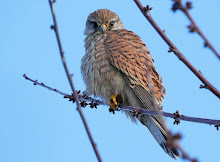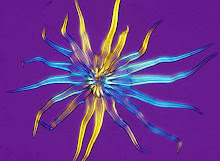A leafless hawthorn hedge in the Tunstall valley, County Durham, shorn with geometric precision by a tractor-mounted hedge cutter, but decorated with one of the most luxuriant arrays of lichens I’ve ever seen. Much of the hedge was bare, apart from scattered yellow encrustations of common orange lichen Xanthoria parietina, but short lengths were festooned, like overdressed Christmas trees, with countless dangling fronds of farinose cartilage lichen Ramalina farinacea.
This valley offers high quality lichen habitat, thanks to relatively unpolluted North Pennine winds and humidity from Tunstall reservoir, but why had these short lengths of hedge become so gloriously laden with this particular species? I recalled walking here last summer and finding the same sections defoliated by small ermine moth caterpillars that had sheathed twigs in their silken web. By autumn the hedge had begun to recover, but maybe that leaf-loss and interruption in twig growth had given wind-blown lichen spores sufficient opportunity to colonise bare twigs, trapped by that web of sticky silk? It’s tempting to believe that the beauty of this winter hedgerow was due to the arrival of an egg-laying female ermine moth last spring, a serendipitous event in the endless, unpredictable cycle of life.

























No comments:
Post a Comment
Note: Only a member of this blog may post a comment.